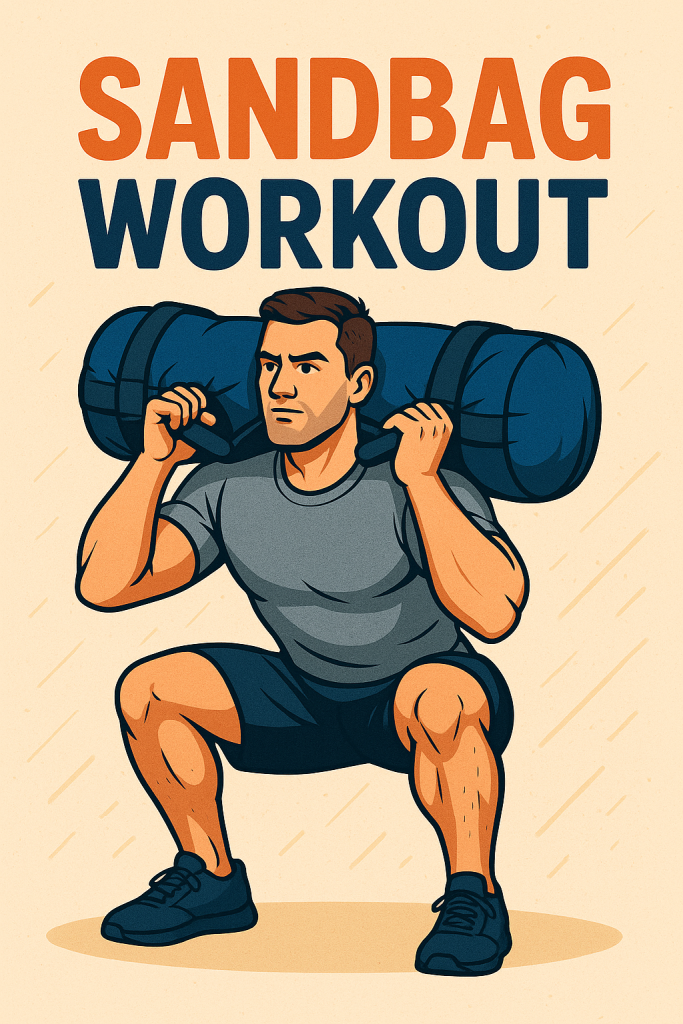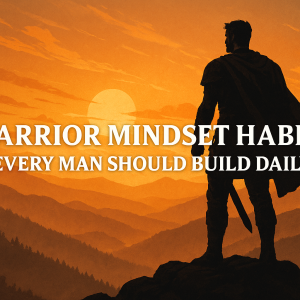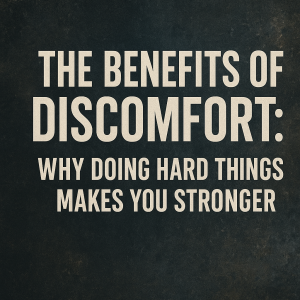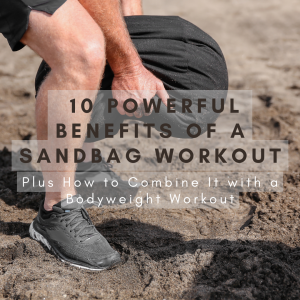Introduction to Sandbag Workouts
A sandbag workout is one of the most versatile and underrated forms of resistance training available today. With a simple weighted bag filled with sand, you can engage multiple muscle groups, build real-world strength, and improve your athletic conditioning, without needing fancy gym equipment.
Unlike traditional weights, a sandbag’s shifting load challenges your core, stability, and coordination, mimicking real-life movements like lifting groceries, carrying luggage, or performing manual labor. When paired with a bodyweight workout, it becomes an unbeatable duo for full-body conditioning and endurance.

What Is a Sandbag Workout?
A sandbag workout involves exercises performed with a heavy sand-filled bag instead of dumbbells or barbells. Because the sand moves as you lift or carry it, your stabilizing muscles must work harder to maintain control, making it a functional, real-life strength builder.
Why Functional Fitness Matters More Than Ever
Modern fitness isn’t just about lifting heavy or running fast, it’s about performing everyday movements efficiently. Functional training, like sandbag and bodyweight workouts, improves how your body moves, reacts, and stabilizes. It’s training for life, not just aesthetics.
Benefits of Training with a Sandbag
Builds Real-World Strength and Stability
Unlike static weights, sandbags are unstable. This instability forces your muscles to engage deeply, especially your core, hips, and lower back, improving balance and strength across all planes of motion.
Improves Grip, Core, and Balance
The constantly shifting weight of a sandbag enhances grip strength and challenges your stabilizers, vital for improving athletic performance and preventing injuries.
Enhances Fat Loss and Conditioning
Sandbag workouts combine strength and cardio elements, making them excellent for burning fat while building lean muscle. Movements like cleans, carries, and presses elevate heart rate for a metabolic boost.
Perfect for At-Home or Outdoor Training
Sandbags are affordable, portable, and adaptable to any environment, perfect for garage gyms or outdoor workouts. You can even DIY one with a duffel bag and sand!
Sandbag vs. Bodyweight Workout: What’s the Difference?
Both sandbag and bodyweight workouts offer incredible benefits, but they differ in resistance and adaptability.
Comparing Intensity and Resistance Levels
Bodyweight workouts rely on your body’s mass for resistance, while sandbags add external load. This combination allows for scalable intensity, from easy mobility drills to heavy strength training.
Which Is Better for Beginners?
Beginners should start with bodyweight exercises to learn form, then gradually add sandbag movements for progressive overload.
Combining Sandbag and Bodyweight Training for Maximum Results
Alternating between both creates a balanced hybrid routine, sandbags for strength and bodyweight moves for mobility and endurance.
How to Get Started with Sandbag Training
Choosing the Right Sandbag Weight and Type
For beginners, start with:
- Men: 25–50 lbs
- Women: 15–35 lbs
Adjust as your strength improves. Choose a durable sandbag with strong handles for safety and comfort.
Safety Tips and Proper Form Techniques
- Warm up before every session
- Keep your back straight when lifting
- Engage your core during every movement
- Avoid jerky motions, control the bag’s momentum
The Ultimate 30-Minute Sandbag Workout Routine
| Phase | Exercise | Duration | Focus |
|---|---|---|---|
| Warm-Up | Bodyweight squats, lunges, push-ups | 5 min | Mobility |
| Circuit 1 | Sandbag deadlift, front squat, push press | 10 min | Strength |
| Circuit 2 | Sandbag carry, over-shoulder toss, plank | 10 min | Conditioning |
| Cool Down | Stretching, deep breathing | 5 min | Recovery |
(Perform 3 rounds with 60 seconds rest between circuits.)
5 Best Sandbag Exercises to Try Today
Sandbag Deadlift
Targets hamstrings, glutes, and core, perfect for building foundational strength.
Sandbag Clean and Press
A compound move that hits multiple muscle groups, improving explosive power.
Sandbag Front Squat
Enhances quad and glute strength while improving posture and stability.
Sandbag Over-the-Shoulder Toss
A dynamic, full-body move that mimics real-world lifting mechanics.
Sandbag Bear Hug Carry
Great for developing grip strength and overall endurance.
Integrating Sandbag and Bodyweight Workouts for Functional Fitness
Combine 3 days of sandbag training with 2 days of bodyweight workouts weekly for a complete routine.
Example Split:
- Mon/Wed/Fri: Sandbag circuits
- Tue/Thu: Bodyweight mobility + calisthenics
Nutrition and Recovery Tips for Sandbag Athletes
- Eat a balanced meal with protein and complex carbs before workouts
- Stay hydrated
- Sleep at least 7–8 hours per night
- Include stretching and foam rolling to enhance recovery
FAQs About Sandbag Workouts
Q1: Are sandbag workouts good for beginners?
✅ Yes! Start with lighter weights and focus on form before intensity.
Q2: Can I build muscle using only a sandbag and bodyweight?
Absolutely. These tools provide functional resistance that promotes real muscle growth.
Q3: How heavy should my sandbag be?
Start between 15–50 lbs depending on your strength level.
Q4: What muscles do sandbag exercises work?
They target your legs, back, arms, core, and stabilizers, a full-body workout.
Q5: How often should I do sandbag workouts?
3–4 sessions per week is optimal for strength and recovery balance.
Q6: Do I need a gym to get results?
Nope! You can train effectively anywhere with just a sandbag and your bodyweight.
Conclusion: Build Strength Anywhere with Sandbag and Bodyweight Training
A sandbag workout is one of the most powerful, minimalist approaches to building strength, endurance, and stability. When combined with a bodyweight workout, it forms a complete system for fitness that’s practical, functional, and adaptable to any lifestyle.
👉 Whether you’re training at home, outdoors, or on the go, sandbags prove that you don’t need a gym to get strong. Start simple, stay consistent, and watch your body transform through raw, functional power.
External Resource:
For more on functional fitness training, check out the National Strength and Conditioning Association (NSCA).






